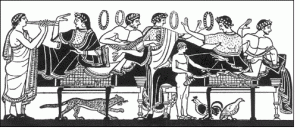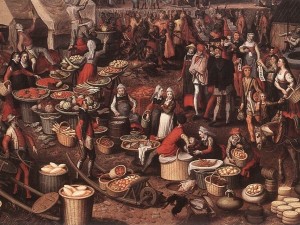What was the daily life of a common person like in the Late Bronze Age?
 It’s easy to imagine our ancestors hanging around the great table, drinking wine, and devising plots to overthrow their kings and queens. It’s far harder to imagine what the daily life of an average person might be. When I was studying Classics back at Berkeley, I was surprised to realize how advanced the common person’s life truly was.
It’s easy to imagine our ancestors hanging around the great table, drinking wine, and devising plots to overthrow their kings and queens. It’s far harder to imagine what the daily life of an average person might be. When I was studying Classics back at Berkeley, I was surprised to realize how advanced the common person’s life truly was.
Once a civilization gets past a basic level of survival needs, society breaks into specialized trades. A person can focus on one skill set or talent, instead of spending all their time hunting and gathering. In the Bronze Age, there were several different trades people employed, and they bartered with one another in a trade system that used slag metal or strait trade goods for payment. Coins weren’t minted for several hundred more years.
In Greece, common trades were working in textiles, pottery, metal, and wood working. The majority of lands lived under a “Palatial System”, meaning a strong central king who collected tribute from his subjects, and usually provided protection and some measure of subsistence security. In many ways, it was very similar to the vassal/serf system of the Middle Ages, except citizens of the ancient world had more rights.
The palaces would own large workshops where most of the elite goods were crafted. Craftsmen in the employ of the crown would work from sun up to mid-day, then they were free to work in their own shops. Certain Masters gained notoriety and would stamp their work. It was prestigious to study under such a ‘Master’.
HOWEVER – Merchants, people who would resell other people’s goods for a profit, were considered vulgar, their profession distrusted.
Slaves were an unfortunate fact of life. However, even slaves had rights in the ancient world and could own some of the fruits of their labor. This was probably because, high or low, anybody could—and sometimes did—become a slave. Slaves were made from warfare, and it wasn’t tradition to consider one region of people as holistically a lesser class.
This is a larger question than can be addressed in a simple post, especially when we get into superstitions, religious beliefs, and differences across kingdoms. But the idealized life on grecian urns is less likely to be a realistic portrayal of the Bronze Age citizen’s reality. It would be more like this:

